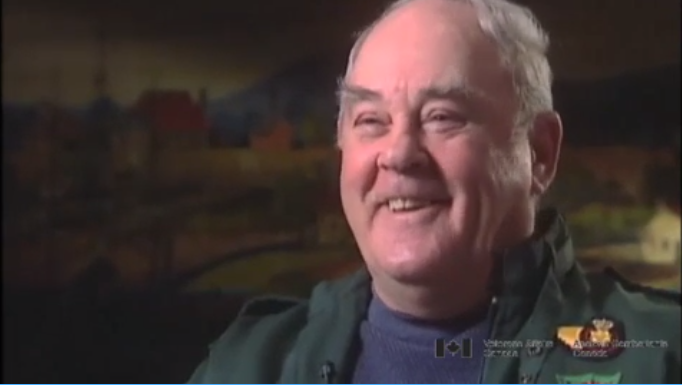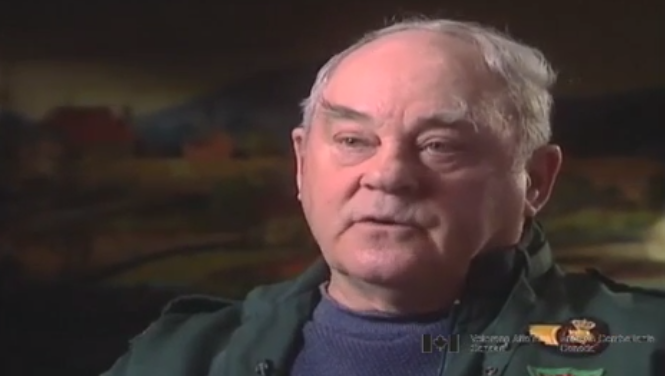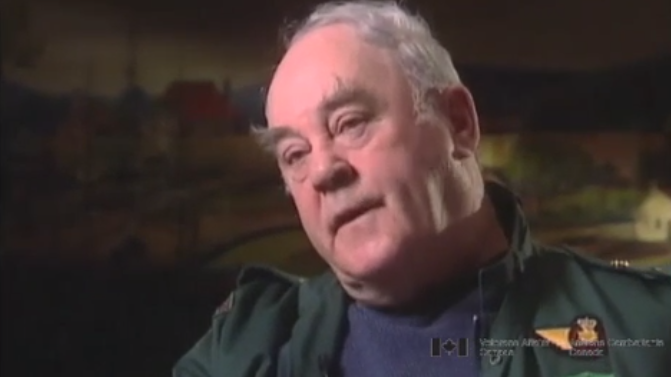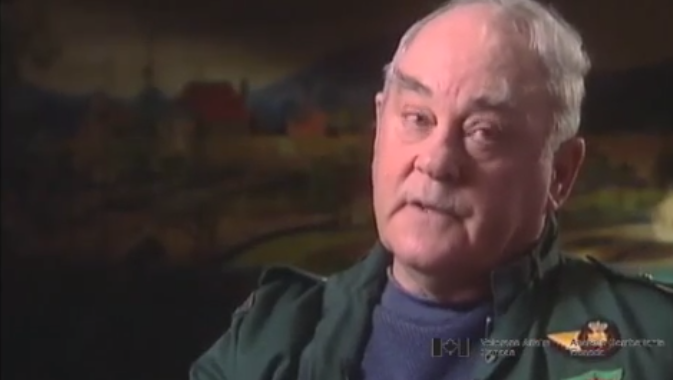Manchurian Fever
Heroes Remember
Manchurian Fever
Transcript
Picture of a Soldier by his bunker, showing how it was built up by sandbags.
dug a hole and then we'd fix it up, put sandbags all around it, a good roof on it, and that's where five of us, four of us, slept, but one would be on guard duty, so, at night. And it was They had these little stoves. We called them "swoofs" because every time the fuel would drip to the bottom, it would "ptchoo", and they smelled and stunk, so this is why most of the guys had breathing problems, of this type of thing. The rats were that big. I seen one going up the, one of the poles in the bunker with a Hershey bar in its mouth, so. And he didn't get the Hershey bar . . . but the guy that ate the Hershey bar, he died of . . . we call it Manchurian fever. There's a different name for it, but the fleas on the, were on the rats go onto the food, and if you eat that food then . . . And quite a few of the guys died from that. It's . . . I really thought he had the flu. We might have saved him, but we didn't realize what he had. Gray was his name.Description
Mr. MacBride talks about a soldier that dies from Manchurian Fever and how he got it.
Albert Hugh MacBride
Mr. MacBride was born July 25, 1932, in New Westminster, British Columbia, in St. Mary's Hospital. He lived the early part of his life in White Rock and moved to New Westminister during the Second World War. When he was 18 he joined the Canadian Army enlisting with the Armoured Corps and the Lord Strathcona's Horse Regiment. Mr. MacBride did his basic training at Camp Borden in Ontario and later in Meaford, Ontario, with his tank regiment. He served as a driver/gunner with the Armoured Corps assigned to a tank. On his way to Korea, Mr. MacBride flew to Japan and after a short stay was transported to a troop ship on it's way to Pusan. In Korea, Mr. MacBride made his way to Hill 355 and served as a part of a five man tank team. In 1953 he returned home to Vancouver via Seattle, Washington, and was greeted by his father upon arrival. Mr. MacBride left the army and joined the Canadian Air Force and transferred to a career as a crash rescue firefighter for 20 years. He was married in 1954 and stationed all over bases in the Canadian Air Force from Summerside, P.E.I., to Germany. After leaving the air force he was the Provincial Fire Inspector and later the Fire Marshal for the Federal Government with Parks Canada Historical Sites and Indian Affairs for 14 years.
Meta Data
- Medium:
- Video
- Owner:
- Veterans Affairs Canada
- Duration:
- 01:52
- Person Interviewed:
- Albert Hugh MacBride
- War, Conflict or Mission:
- Korean War
- Location/Theatre:
- Korea
- Battle/Campaign:
- Hill 355
- Branch:
- Army
- Units/Ship:
- Lord Strathcona's Horse
- Rank:
- Trooper
- Occupation:
- Driver
Related Videos
- Date modified:






